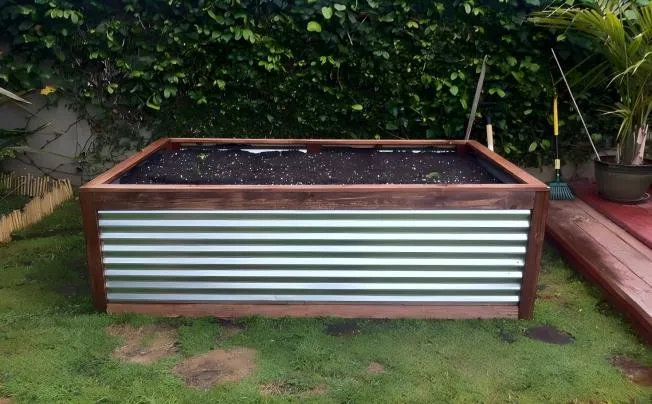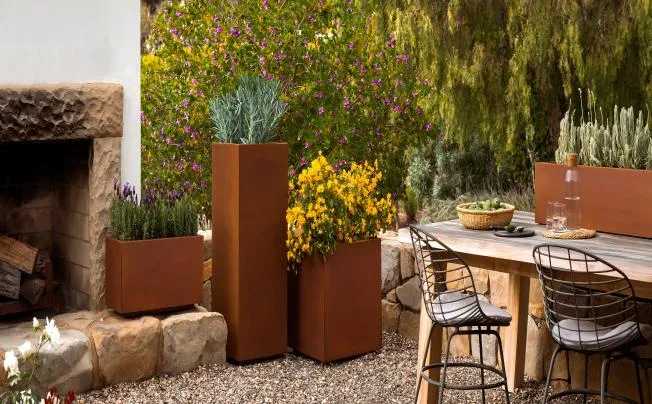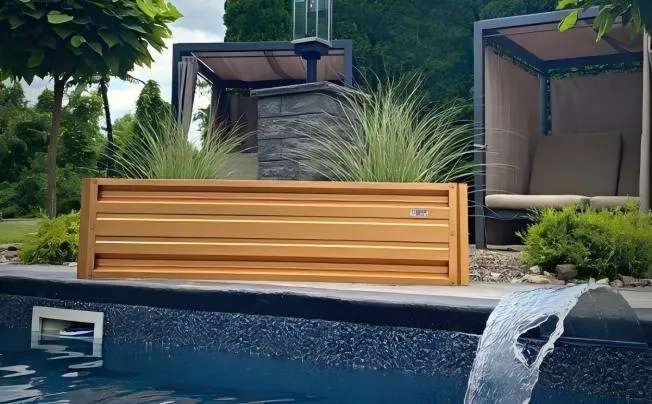Should I Line A Metal Planter With Plastic?
While some believe that lining metal flower pots with plastic has several advantages, including protecting the plants and extending the pots' lifespan, others believe that this is superfluous and could even be harmful to plant growth. So, should we line metal flower pots with plastic?
The Benefits of Adding Plastic Liners to Metal Flower Pots
1. Stop water loss
Water is necessary for the growth of plants. It will be difficult for the plant roots to remain wet if water evaporates too quickly, which will interfere with the plant's ability to grow normally. The plastic lining can significantly lower water evaporation and provide the roots of the plants with a reasonably consistent moist environment.
2. Guard flower pots made of metal
In a humid atmosphere, metals are more likely to rust. The soil's moisture content and some substances will hasten the metal's rusting process. By lining a metal flower pot with plastic, you may create a "separation wall" between the metal and the soil, preventing the metal from coming into direct touch with the chemicals and moisture in the soil. This can prolong the flower pot's useful life and successfully stop metal from rusting.
3. Easy transplanting of plants
Because the plastic lining is there, we may remove the entire lining from the metal flower pot along with the plant roots, protecting the roots and minimising harm. If the plant's roots are badly damaged during the transplanting process, it can take a long time for it to recover or possibly die. Plastic lining makes it simple to move plants to a new location, enabling them to quickly adjust to their new surroundings and lowering the possibility of transplant-related growth stagnation or death.

Disadvantages of Lining Metal Pots with Plastic
1. Low permeability of air
Plastic has a comparatively impermeable texture. When metal flower pots are lined with plastic, the soil's ability to breathe becomes restricted. Long-term exposure to an oxygen-deficient environment may impair the roots' ability to absorb and transport nutrients, which will result in slowed plant growth as well as leaf withering and yellowing. Succulents, for instance, require a lot of air permeability. It is simple for roots to decay and plants to die in an atmosphere with low air permeability.
2. Water can easily build and cause root rot
Water can easily accumulate if the drainage system is poorly built, even though plastic lining can stop water loss. The extra water that is produced when we water the plants cannot be quickly released and will instead collect at the bottom of the plastic lining. Long-term immersion of plant roots in stagnant water will prevent them from breathing correctly because of a shortage of oxygen, which will cause root rot. Additionally, the condition of stagnant water is conducive to the growth of bacteria and fungi, which exacerbates plant root problems.
3. The issue of plastic ageing
Environmental elements including light, temperature, and moisture will cause plastic to deteriorate over time. Plastic loses its initial waterproof and protective qualities as it ages and becomes brittle and cracks. In addition to putting the metal flower pot at risk of rusting once more, this could allow the roots of the plants to pierce the broken plastic and be damaged by the elements. Furthermore, when the plastic ages, the lining must be replaced promptly, which surely adds to our workload and maintenance expenses. Plant development may also be significantly impacted if the deteriorating plastic lining is not found and changed in a timely manner.

Alternatives without plastic lining
Apply a weatherproof coating
Applying a waterproof coating to the metal flower pot's interior is an option if you don't want to use plastic lining. Products like polyurethane waterproof coating that are specifically made for metal surfaces are available on the market. In order to accomplish the goals of waterproofing and rust prevention, it can create a thick waterproof layer on the metal surface that effectively keeps water from coming into contact with the metal. Additionally, the waterproof coating will not completely block air circulation like the plastic lining, and it can ensure a certain degree of air permeability, which has less of an effect on plant roots' ability to breathe. Before applying the waterproof coating, make sure the metal flower pot's surface is clean, dry, and free of impurities and oil. To improve the coating's adhesion, lightly polish the metal surface with sandpaper. Apply two to three layers of waterproof coating evenly, following the product's instructions, and allow adequate drying time in between each layer.
Choose a medium such as clay or coconut bran
Select an alternative medium, such as clay or coconut bran. Clay has good air permeability and water absorption, allowing it to absorb excess water in the soil and release it when the soil dries out, helping to regulate soil moisture. At the same time, the large spaces between clay particles allow air to circulate, which can supply enough oxygen for plant roots. A natural organic medium, coconut bran has a high water retention capacity and can maintain soil moisture. It also has good air permeability, which helps keep plant roots from decaying from a lack of oxygen. For instance, while planting flowers, a specific ratio of clay or coconut bran to other soil media can not only satisfy the plant's food and water requirements but also partially replace the function of plastic lining, thereby fostering a favourable growing environment.

Selected Blogs
-
What customization services are available for metalworking customization?
2024-12-12
-
What Is The Difference Between A Plant Container And A Raised Bed?
2024-04-23
-
Garden Screening & Fence Panels
2024-04-23
-
Gardening pot selection tips
2024-04-17
-
The function and collocation of horticultural fire pot
2024-04-17


